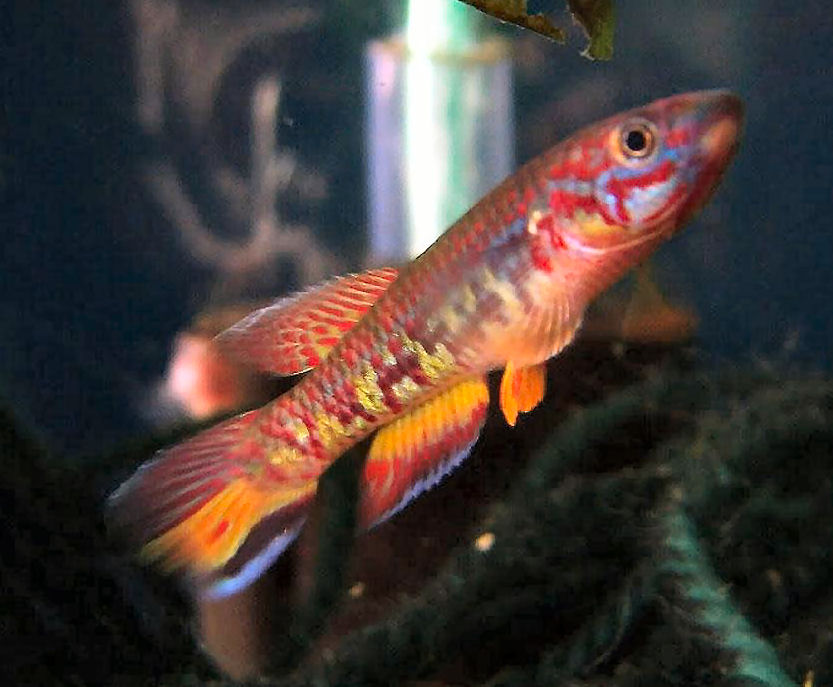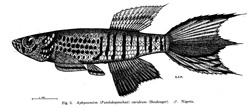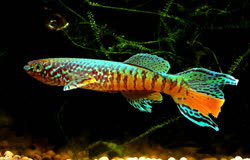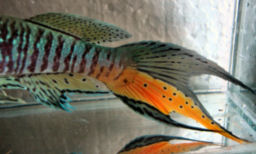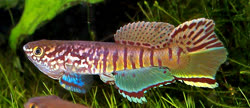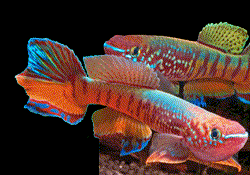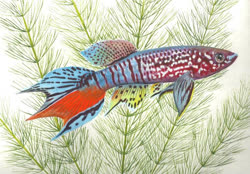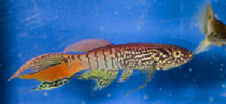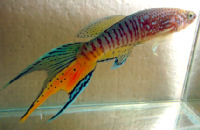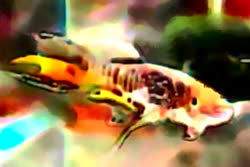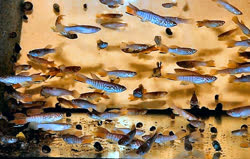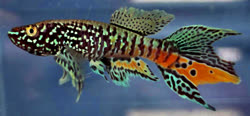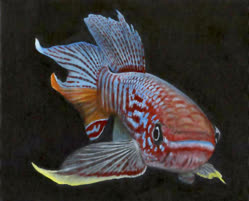|
|
The Blue Gularis 
Michael Jensen photo, taken in Denmark 2025 Discovered in the late 1800's, but as early as November of 1905 this species was being kept in aquaria by hobbyists in Germany; a photo of this fish exists today shown below. Innes photographed Blue Gularis in color in the early 20th century and over the years it has been an emblematic and iconic fish, chosen as the logo for the first national Killifish organization - the AKA. In 1998 Horst Gressens collected a new form in Cameroon, far away from the Nigerian coastal forms that did not have the characteristic orange tail, being instead, a sort of pink-lavender color with no orange in the fish at all..
Note the spelling of the name, described in Eschemeyer: "sjostedti, Fundulus Lönnberg [E.] 1895:191 [Öfversigt af Kongliga Vetenskaps-akademiens Forhandlingar v. 52 (no. 3); ref. 14584] Waterfall of the Ndian River (4°57'N, 8°53'E) and Bonge, western Cameroon. Syntypes: ZMUU 272 (2). Type catalog: Wallin 1996:61 [ref. 32133]. Originally as sjöstedti; since name is not of German origin [Art. 32.5.2.1], the species should be sjostedti and not sjoestedti. The fact that the name of the Swedish collector is printed as Sjöstedt does not make a difference. •Valid as Aphyosemion sjoestedti [sic] (Lönnberg 1895) -- (Wildekamp et al. 1986:236 [ref. 6198] with a holotype [no holotype was established originally], Seegers 1988:49 [ref. 19980], Romand in Lévêque et al. 1992:601 [ref. 21590]). •Valid as Fundulopanchax sjostedti (Lönnberg 1895) -- (Wildekamp 1996:207 [ref. 23649], Murphy & Collier 1997:797 [ref. 25585], Lazara 2001:135 [ref. 25711], van der Zee et al. 2007:109 [ref. 30034] as sjoestedti, Collier 2019:32 [ref. 37884]). Current status: Valid as Fundulopanchax sjostedti (Lönnberg 1895). Nothobranchiidae. Distribution: West-central Africa: Cameroon. Habitat: freshwater." The geographical information is not entirely correct however, as the fish is also found in coastal Nigeria and there is at least one report from Vin Kutty (Pers comms, 1988) of them being found in the ocean near the shore and being commonly found there for years.
|













